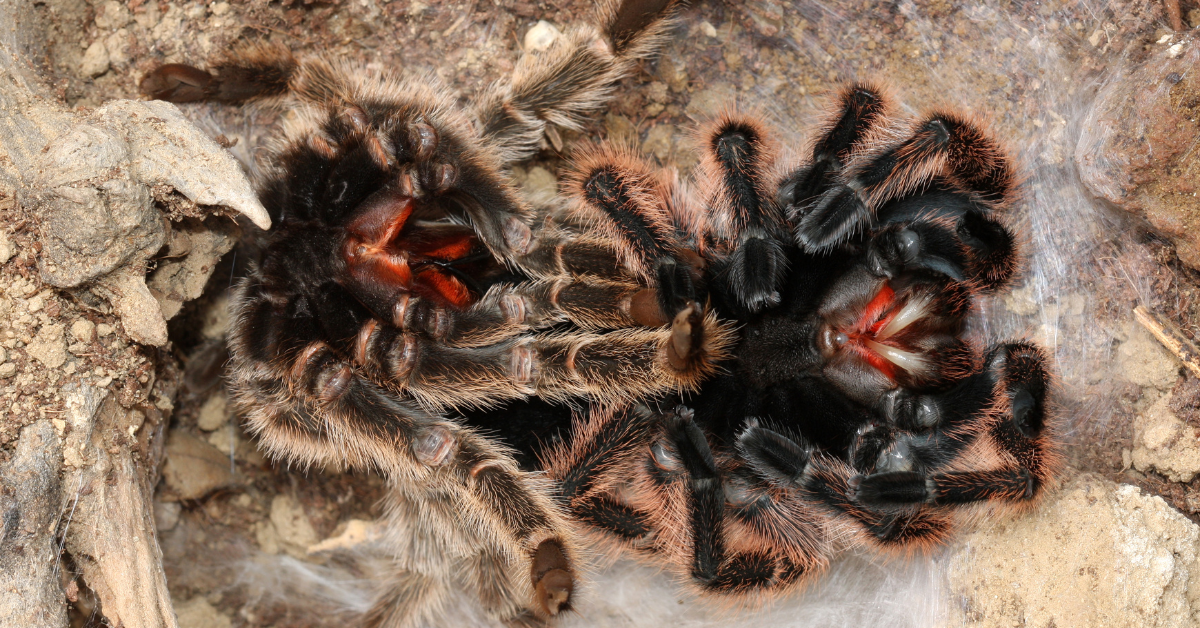
Wondering how often do tarantulas molt? Every tarantula will molt several times over it’s lifetime. In this article, you will find out not only how often they molt, but more importantly, why they molt, what to do when they molt and how to look after your tarantula during this very fragile period.
Tarantula’s molt roughly every six months. They will start off in premolt, a period that often lasts several months. The main reason for molting is to shed their exoskeleton (body covering) in order to become larger. The actual molting process can take between 15 minutes and a full day.
Now we have covered the basic answer, lets look more in depth at the stages of a tarantula molt, signs to look out for and what to do afterwards.
Why do Tarantulas Molt?
Tarantulas are like reptiles and amphibians. As they have an exoskeleton, they must shed this to become larger.
During the molting process, tarantulas contract their abdomens, which in turn pushes fluid into the cephalothorax (upper body). The exoskeleton is already strained and this fluid increases the pressure, allowing the tarantula to break through its weak spots.
Signs of Molting
When your tarantula is ready to molt, there are a few signs that you should be aware of. Naturally, some of these can be attributed to other, more sinister reasons but generally it’s a sign that your tarantula is getting ready to molt.
- Decrease in Activity – Although mostly nocturnal creatures, you will notice a decrease in activity in a tarantula that is about to molt.
- Decreased Appetite – A tarantula in premolt will stop eating, sometimes for a few weeks beforehand.
- Increased Use of Webbing – Tarantulas may make a silk mat to lay on during their molt.
- Dull Coloration – A tarantulas usual vibrant colouring may dull somewhat in the stages leading up to molting.
- Development of a Bald Spot – Tarantulas also sometimes develop a bald spot on their abdomen that grows increasingly darker as the molt draws near.
How Do I Know my Tarantula is Molting and Not Dead?
When it is time to molt, a tarantula will lay either on its back or its side, motionless.
Do not assume he is dead, when tarantula’s die, they go into a “death curl”, laying on their front with their legs curled up underneath them.
This is because tarantula’s don’t use muscles in their legs so when they are extremely weak or near to death, their legs curl up close to their body.
Watch this time-lapse of a Mexican Red Knee (Brachypelma smithi) molting. Notice the tarantula starts off on its back and on a silk bedding that he made especially for the occassion.
The actual molt took over 10 hours but has been shortened down to three minutes. Also notice how vibrant the colours are after molting. Amazing!
What Do I Do When My Tarantula Has Molted?
Once molted, a tarantula is still very vulnerable to prey or other outside influences.
Their body, and new fangs, will remain soft for the next days. It is therefore imperative that you do not feed your newly molted tarantula for at least a week. Even a tiny cricket is able to cause considerable harm to a newly molted tarantula.
Help! My Tarantula has got Stuck!
This is highly unlikely, but if indeed your tarantula is unable to completely shed his skin, you can easily dampen and very gently remove any stuck piece. Failing that, you can try some emergency actions.
- Try raising the humidity. This is probably the least risky and invasive option. It often simply involves adding more water to the water dish or spraying some water onto the substrate. This simply provides the tarantula with more lubrication.
- Create an ICU. This is a little riskier and involves moving the tarantula into a smaller container containing dampened paper towels, and then adding a lid with breathing holes. If you feel this is too risky, it is also possible to provide a similar setting without moving the tarantula. Simply take their enclosure into a closed bathroom and leave the shower running on hot to create humidity.
- Cut them out. Cutting your tarantula out of its molt is another step up from just creating humidity and is of course even riskier and requires more care. In this case, you will need to take a scalpel, or another sharp implement and perform surgery on your tarantula, meticulously cutting away the old molt. Be sure that when you are doing this, as well as the scalpel, you have some damp q-tips and tissues to soften the exoskeleton you are trying to remove. You should also have something to clot your tarantula’s blood in case you make a mistake or cut too much.
Can a Tarantula Die during the Molting Process?
Stress can be a causing factor as to why a tarantula would die during the molting process. It takes a lot of strength to shed their entire skin, fangs, etc. Getting stuck is also a contributing factor, although this is very rare.
FUN FACT: Did you know that during the molting process a tarantula is able to replace a broken/ missing leg or fang?
We hope you found this article useful and look forward to bringing you more interesting and fascinating content!
Until next time, stay spidery!
